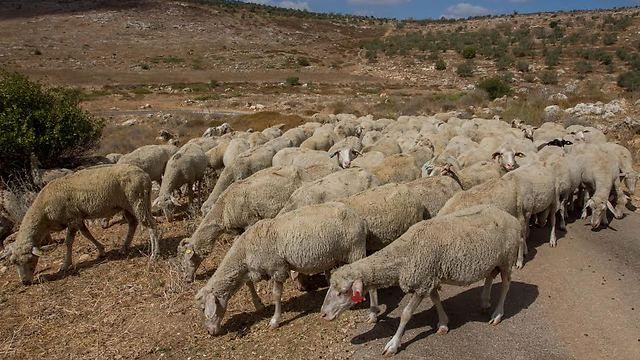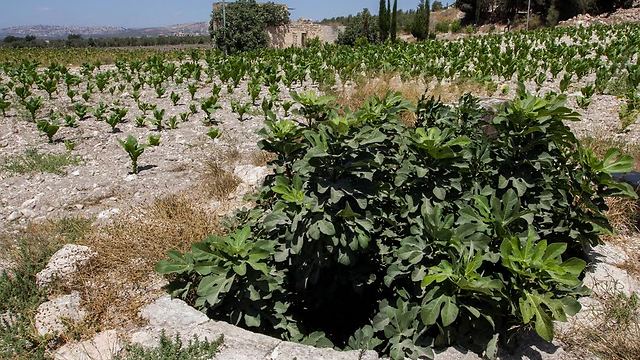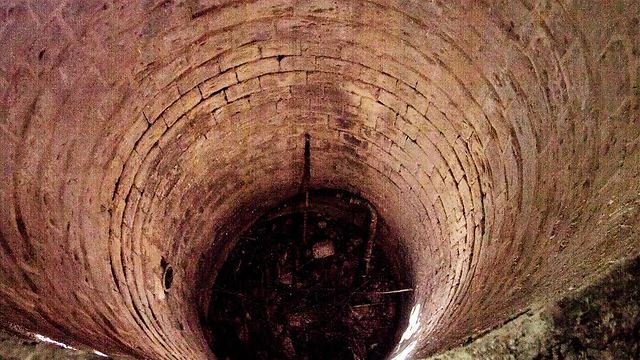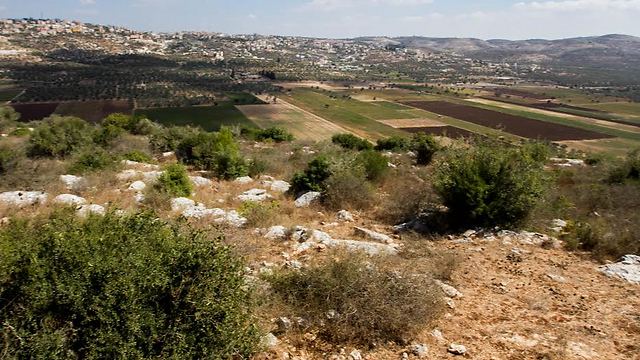
In search of Joseph’s well: A journey into the Book of Genesis
A group of seniors, escorted by IDF soldiers, travels deep into the Palestinian Authority on a armored bus to see what could possibly be the pit Joseph was thrown into by his brothers near the Biblical city of Dothan.
So every child knows the story, but not the place. According to the Book of Genesis, the incident occurred near the Biblical city of Dothan, a place which is now called Tel Dothan and is located deep within the Palestinian Authority, not far from Jenin.
We don’t know the location of the pit which Joseph was thrown into for certain, but we can guess. The archeological site knowns as Jubb Yussef (“Joseph’s Well”) can be still reached today, but it’s not easy to do so—visitors must coordinate their arrival with security forces, travel in an armored bus, and be escorted by soldiers.
Ynet accompanied a group of tourists to the possible location of the drama that shaped the Jewish people’s history.
Dothan Valley offers an ancient view of antique agriculture. Flocks of sheep cross the roads as children lead donkeys carrying hay. Our bus, with a group of senior citizens travelling inside, follows the military vehicles and descends to a dusty dirt road towards the impressive man-made hill located in the heart of green tobacco fields.
We stop at the foot of the hill. The seniors get off the bus and quickly follow the guide into a crumbling structure built over an old well. Malkiel Horowitz, the tour guide from the Midreshet Shomron college, points at a small hole in one of the walls, through which one can see what could possibly be that famous pit. A line has already formed behind the small hole. Everyone wants to see Joseph’s well.
Energetic senior citizen Yona Gadasi of Kfar Saba, who peeked into the hole excitedly, is becoming convinced. “I know there are a lot of pits here,” she says. “But well-informed people have likely checked it and decided that this is the pit, and I tend to believe them.”
Miriam Nagar is even more resolved. “I believe it’s here,” she says. “They wouldn’t lie to us. They’ve checked it. They wouldn’t just decide that it’s here. The pit itself looks very renovated, but according to the Bible and to researchers this is Joseph’s well!”
The city of wells and pits
But not everyone sees it as an absolute and certain truth. Yair Elmakayes, director of the Samaria study center, pulls us away from the commotion and excitement inside the crumbling structure, and we walk towards one of the other pits in the area, located in the middle of a nearby tobacco field and hidden by a fig tree.
He has no doubt about the identity of the Biblical city: “We are at the foot of the city of Dothan, which has been identified for certain and its excavation reports were already published in 2005. Today there is no question about it—this is the Biblical Dothan. The meaning of the word ‘dot’ in Hebrew or Aramaic is pit, and Dothan is the city of pits.”
The reason for the multiple number of pits in the Dothan Valley area stems from the structure of the land. Unlike central Samaria, which has plenty of springs, here there are almost no natural springs, so the prehistoric people used to dig wells for collecting water. The pit we are standing above looks impressive and deep and looks like it was paved with white stone during the Ottoman era.
Elmakayes knows many pits in the area and refuses to point at one of them as the Biblical Joseph’s well. “We are told that young Joseph was sent by his father, Jacob, to look for his brothers. Joseph arrives at the Nablus area, and a person he meets in the field tells him that his shepherd brothers went in the direction of Dothan, so Joseph follows them to the city of Dothan,” he explains. “Here, in this area, the brothers put Joseph inside the pit, and this is where a group of Ishmaelites takes him south and sells him to the Egyptians.
“The Biblical writers were familiar with the Land of Israel’s geography. Dothan is a city of wells and pits, and there is an ancient road descending from the Gilead region and connecting to the main road to ancient Egypt. It makes a lot of sense that they would take a slave from here to sell him in Egypt. The Arabs call the place Jubb Yussef. That is how the tradition about these pits was preserved.”
Do you believe this is Joseph’s well?
“I am one hundred percent sure that the impressive hill in front of us is the Biblical city of Dothan. Pointing at a certain place and saying that a Biblical event happened here 3,500 years ago is extremely problematic. But there is the connection of the city of Dothan with wells next to it. It wouldn’t be unfounded to say that if the Biblical story did happen, it happened here. Pointing at a certain pit out of the hundreds of pits scattered here is slightly pretentious.”
Yehuda Israel, director of the Samaria Regional Council’s tourism department, is interested in making the site accessible to all Israeli citizens.
“Our vision is to portray Samaria as a normal place, which people can tour and vacation in. The main challenge is security-related. Since the implementation of the Oslo Accords, we are in the middle of Area B. Unlike most parts of Samaria, where people can walk freely, here we require coordination and military security, as well as an armored bus. Because of this difficulty, it will take longer to realize this place’s tourist potential.”
















